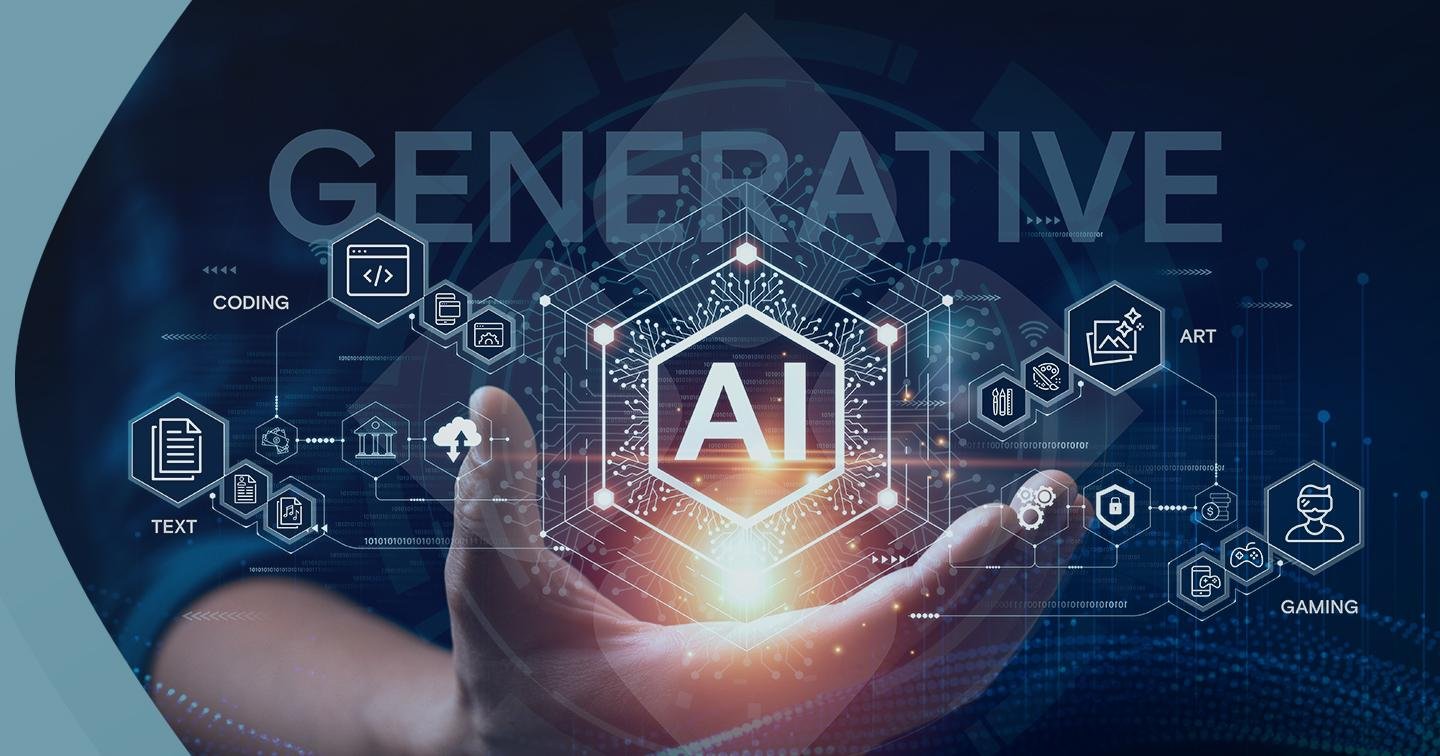The Rise of Generative AI: Transforming the Future of Content and Innovation

Generative AI, a groundbreaking branch of artificial intelligence, is redefining how machines create and replicate human-like content. Unlike traditional AI systems that focus on analysis and prediction, generative AI leverages deep learning models to produce original data such as text, images, audio, and code. At the core of this technology are neural networks, particularly Generative Adversarial Networks (GANs) and Transformer-based models like GPT and DALL·E. These innovations have enabled AI to become a co-creator in sectors ranging from entertainment and marketing to software development and healthcare. As this field continues to evolve, it holds the potential to enhance creativity, automate complex tasks, and unlock new realms of human-computer interaction.
One of the most transformative applications of generative AI is in content creation. AI models like OpenAI's ChatGPT and Google's Gemini can now generate coherent articles, engaging marketing copy, poems, and even programming code. For businesses, this means a reduction in content production costs and increased scalability. For creators, it offers a powerful tool to overcome creative blocks and accelerate idea development. The use of AI-generated content is becoming increasingly prevalent in social media, journalism, e-commerce, and digital marketing, providing personalized and high-quality material tailored to target audiences. As a result, generative AI is becoming indispensable in modern digital strategies.
Visual content generation has seen a dramatic transformation thanks to generative AI. Tools like Midjourney, DALL·E, and Stable Diffusion use text-to-image generation to convert natural language prompts into detailed visuals. This innovation is empowering graphic designers, advertisers, and content creators to explore new creative frontiers without the need for extensive graphic design skills. Brands are now using AI-generated images for campaigns, product prototypes, and concept art, enabling rapid iteration and cost savings. Furthermore, these technologies democratize design by making high-quality image generation accessible to non-experts, leveling the creative playing field across industries.
The music and entertainment industry is also witnessing the power of generative AI. Algorithms can now compose music, mimic vocal tones, and create sound effects that were traditionally crafted by professional musicians. AI-powered platforms are enabling artists to experiment with new styles and produce tracks more efficiently. In film and gaming, generative AI contributes to scriptwriting, character design, and immersive world-building. Deepfake technologies, although controversial, demonstrate the ability of generative models to replicate human likenesses for cinematic effects. While ethical concerns persist, the creative potential of AI in entertainment is pushing the boundaries of storytelling and production.
In software development, generative AI is optimizing workflows through code generation and bug detection. Tools like GitHub Copilot use machine learning to suggest code snippets, auto-complete functions, and generate entire code blocks based on natural language descriptions. This streamlines the development process, reduces errors, and accelerates project timelines. Novice developers benefit from learning assistance, while experienced engineers can focus more on strategic tasks rather than repetitive coding. Generative AI thus serves as a digital assistant in programming, enhancing productivity and reducing cognitive load across the tech industry.
Generative AI is making significant strides in healthcare as well. From designing molecular structures for new drugs to generating synthetic medical images for training models, the applications are vast. AI-generated data can augment real-world datasets, helping to train diagnostic models with greater accuracy. For example, in radiology, AI can create high-resolution medical scans to improve anomaly detection. In genomics, generative models are used to simulate protein folding and accelerate drug discovery. This blend of artificial intelligence and bioscience is poised to revolutionize personalized medicine and improve patient outcomes through faster, more precise innovations.
Despite its advantages, generative AI raises important ethical and regulatory concerns. The potential for misinformation, deepfakes, and plagiarism is significant. As AI-generated content becomes indistinguishable from human-made material, questions around authorship, copyright, and accountability arise. Moreover, the misuse of generative models for malicious purposes, such as generating fake news or impersonating individuals, poses a societal risk. Addressing these challenges requires a collaborative effort among policymakers, technologists, and ethicists to develop robust governance frameworks. Transparency in model training, responsible AI deployment, and user education will be critical to ensuring safe and ethical use of generative AI technologies.
Looking ahead, the future of generative AI promises even deeper integration into daily life and business operations. As models become more efficient and multimodal—able to understand and generate across different media types—new applications will emerge. Real-time AI companions, hyper-personalized content, and AI-powered innovation labs are on the horizon. Industries like education, finance, architecture, and customer service will increasingly adopt generative AI to improve engagement, optimize processes, and drive growth. However, to fully harness its benefits, organizations must invest in AI literacy, data ethics, and responsible development practices.
Source - https://www.marketresearchfuture.com/reports/generative-ai-market-11879
Generative AI is reshaping the technological landscape by unlocking new dimensions of creativity, productivity, and innovation. Its ability to autonomously generate human-like content across multiple domains is a testament to the rapid progress in machine learning and neural networks. While it offers immense potential, its implementation must be guided by ethical considerations and transparent practices to prevent misuse and ensure inclusivity. As we stand at the threshold of an AI-driven era, generative AI serves not only as a tool for automation but also as a catalyst for reimagining the way we think, create, and interact with technology.







